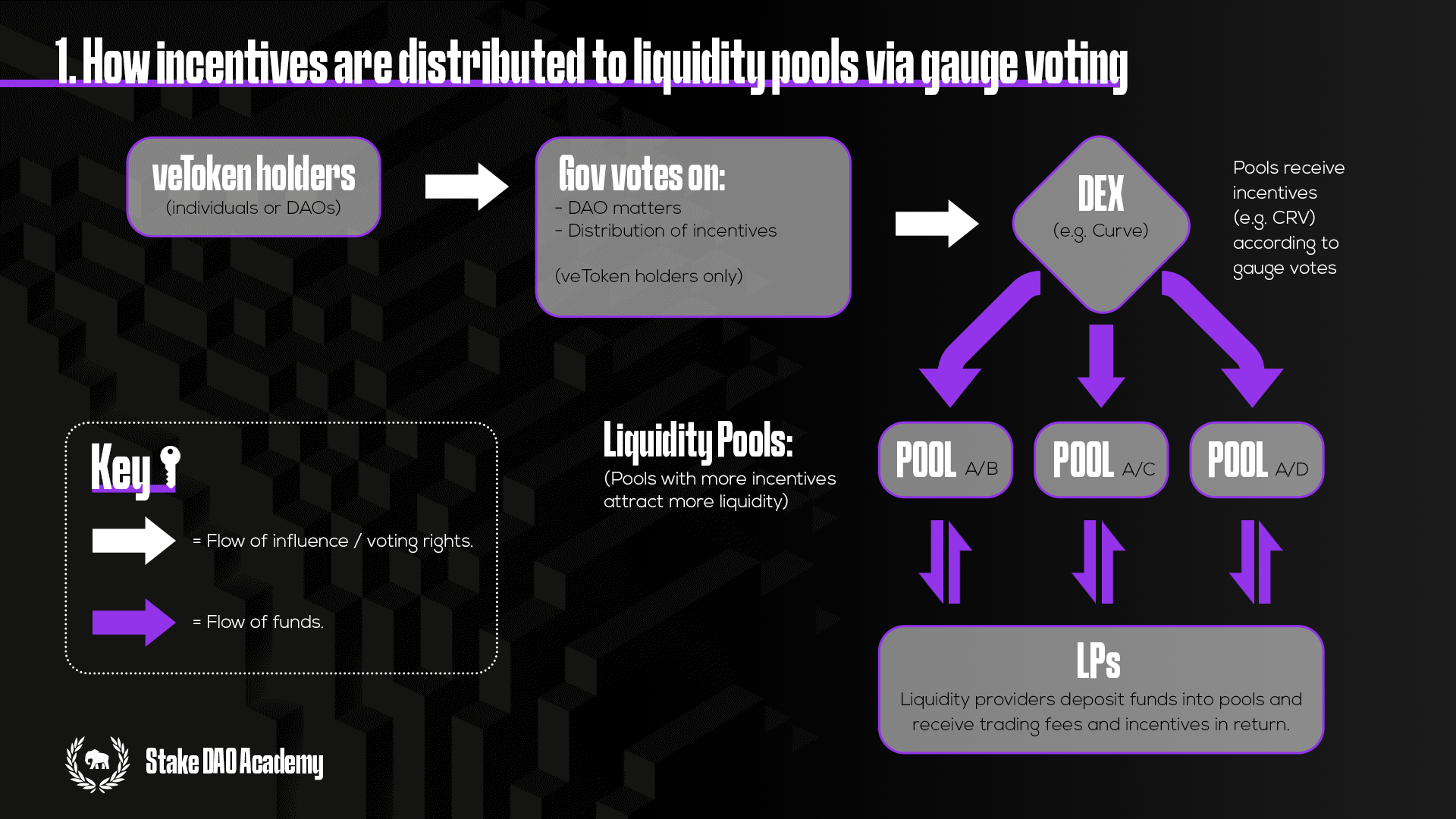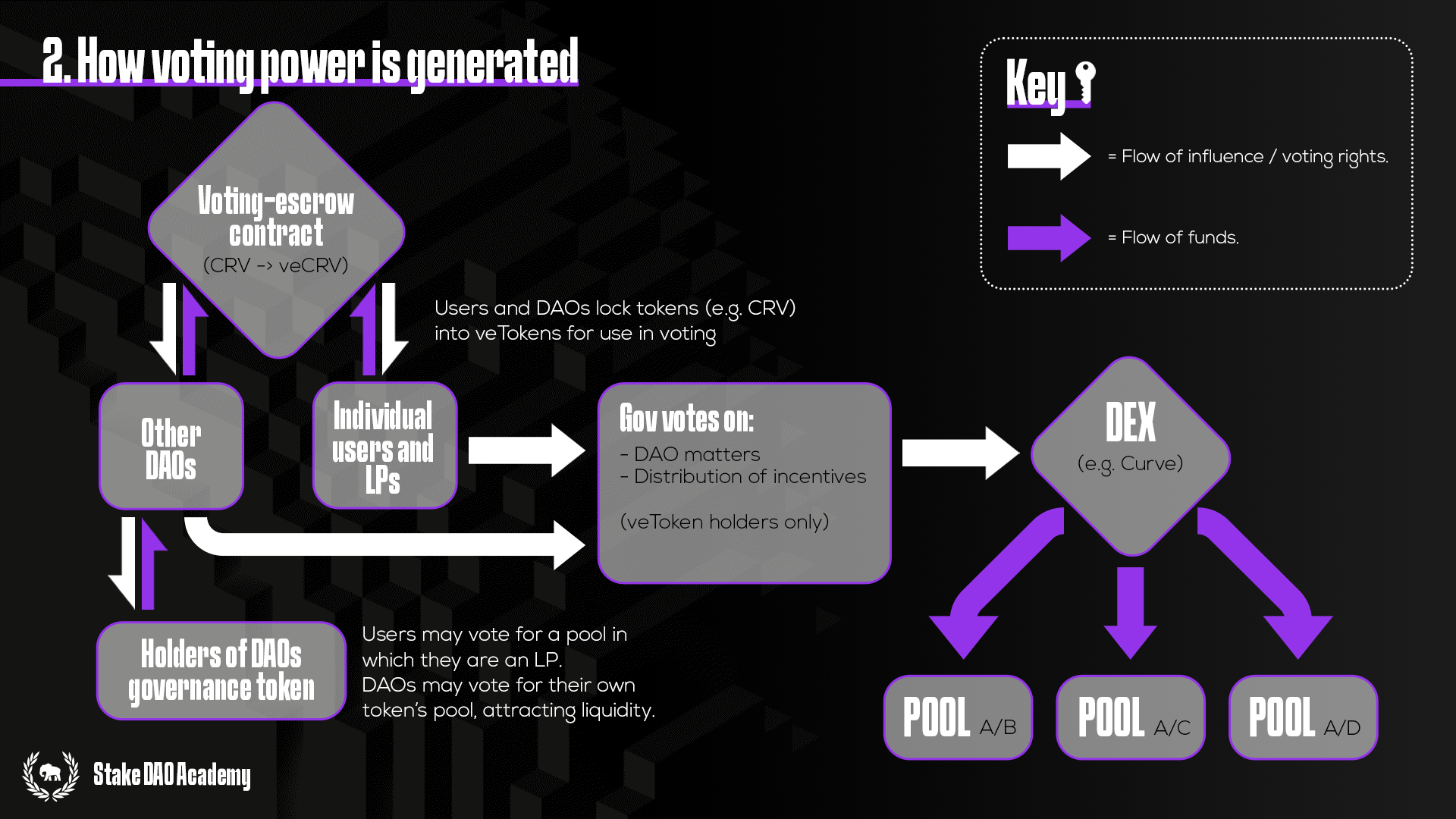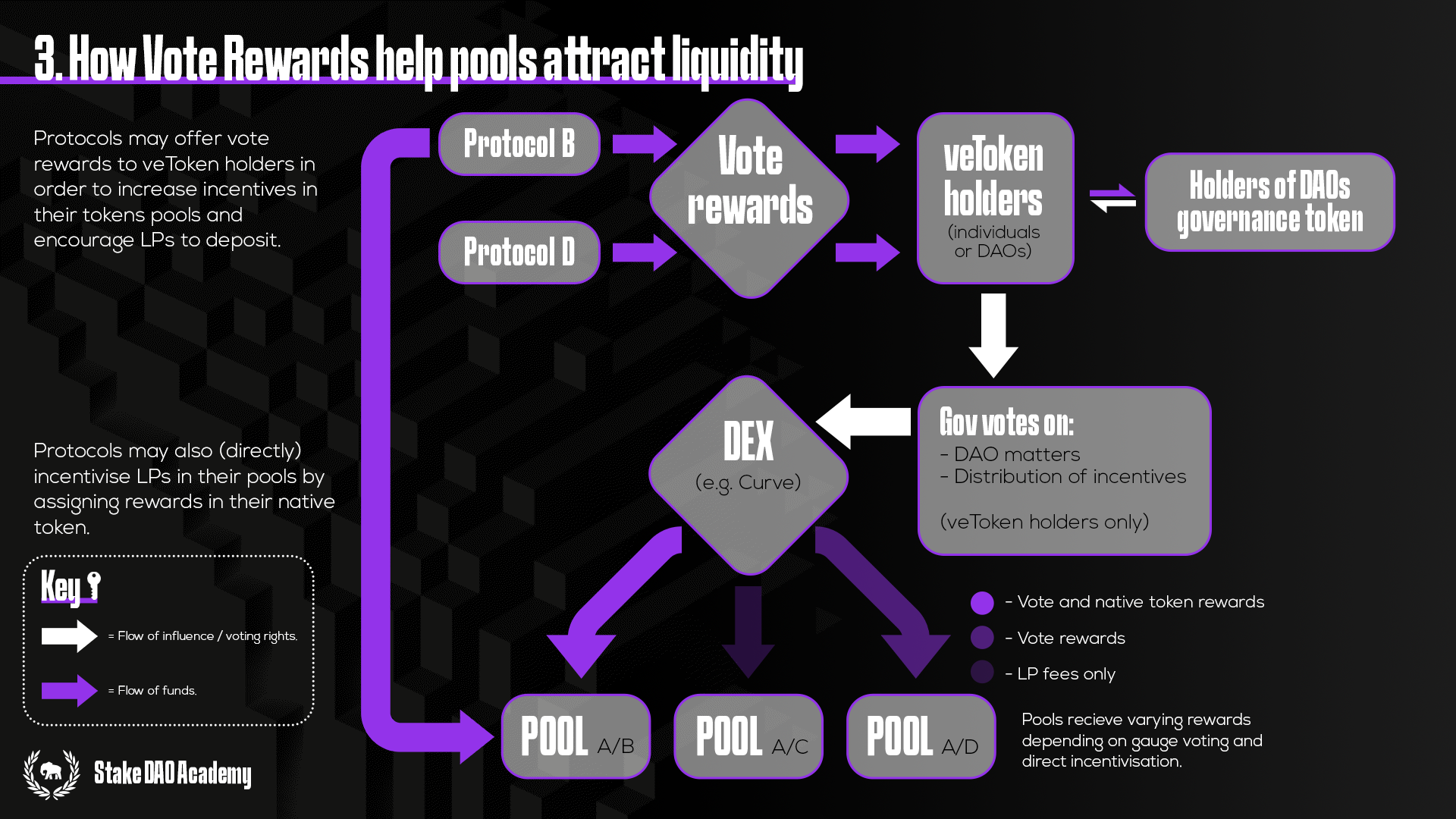Many DeFi projects use governance tokens as a way for users to participate in the organisation’s decision-making process, and potentially as a way to pass on the protocol’s earnings to its token holders.
Governance proposals cover everything from development goals and potential partnerships to overall strategy. Voting may also decide how rewards for liquidity providers (LPs) are distributed. The veToken model, pioneered by Curve Finance, allows for Gauge Voting, which determines the rewards allocated to certain liquidity pools.

In veToken systems, e.g. Curve, users who wish to vote are required to lock up tokens (CRV) for extended periods, with more voting power given to those who lock for longer. The resulting veToken (veCRV) is non-transferrable; it cannot be sold. Holders of veTokens can therefore benefit by either voting for a pool’s gauge in which they are an LP (receiving a share of the rewards themselves) or, alternatively, by taking advantage of vote rewards (commonly referred to as “bribes”) for a specific gauge.
Many projects use Curve pools as their token’s primary liquidity, which is key to maintaining a stable price. They can, of course, allocate DAO funds to liquidity provision (protocol-owned liquidity), however, this takes up precious resources and may expose the DAO to additional risks.
Instead, many projects incentivise DeFi users to provide liquidity for their token on Curve. This can be done either by allocating rewards of their own token to the pool, or voting for the pool’s gauge in order to direct CRV rewards there. Both of these options have their downsides, though. The former creates selling pressure from yield farmers dumping the rewards, and the latter requires accumulation of CRV and locking it up for veCRV voting power.

A third option avoids these pitfalls; rewarding veCRV holders who vote for a specific pool’s gauge.
By allocating a set pool of funds to veToken holders in exchange for voting for their gauge, projects can attract liquidity in a controlled and flexible manner. The rewards, which are managed by smart contracts, may apply to individuals, DAOs and potentially, by extension, their governance token holders. Protocols may choose this option in combination with any of the methods mentioned above.

An entire ecosystem of projects has grown around the concept of vote rewards. Stake DAO’s fully on-chain Votemarket has been developed with the best interests of both the projects seeking to attract liquidity and potential voters in mind.
As well as a platform to create fully on-chain, flexible and efficient reward solutions for gauge voting, Votemarket also aggregates all active bribes across the sector, allowing users to pick the rewards which suit them best.
Following in Curve’s footsteps, many other projects, such as Angle and Frax, have chosen to use the veToken model, and they function in a similar way. Stake DAO’s Liquid Lockers allow users to participate in veToken governance systems, retaining their voting power (which can generate income via vote rewards) without locking their tokens up for extended periods.
Users who simply wish to maximise their vote rewards can even delegate their tokens to the DAO, which optimises users’ votes depending on current market conditions. Additionally, holding Stake DAO’s governance token, veSDT, boosts voting power for users of Liquid Lockers, leading to increased vote reward potential.



